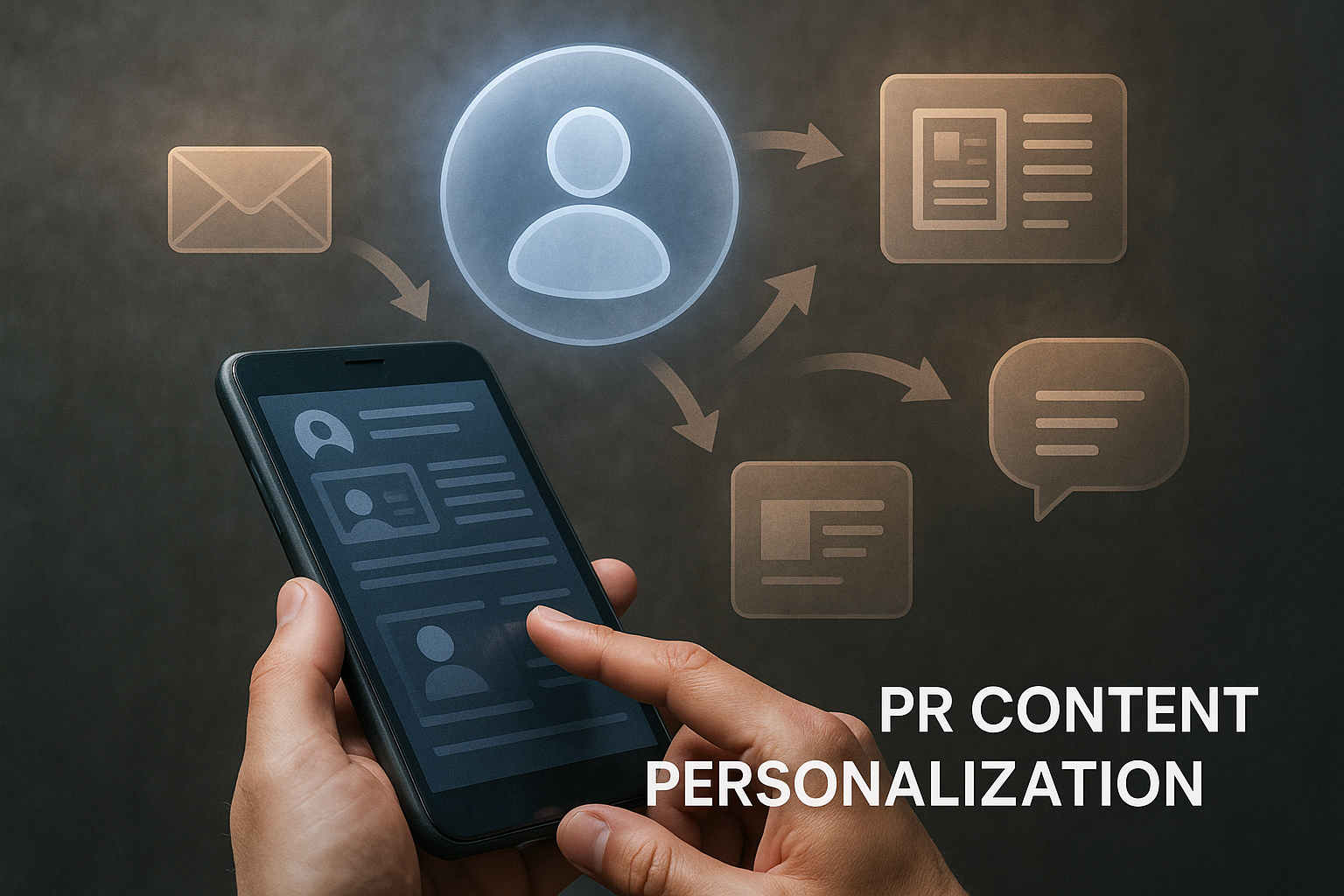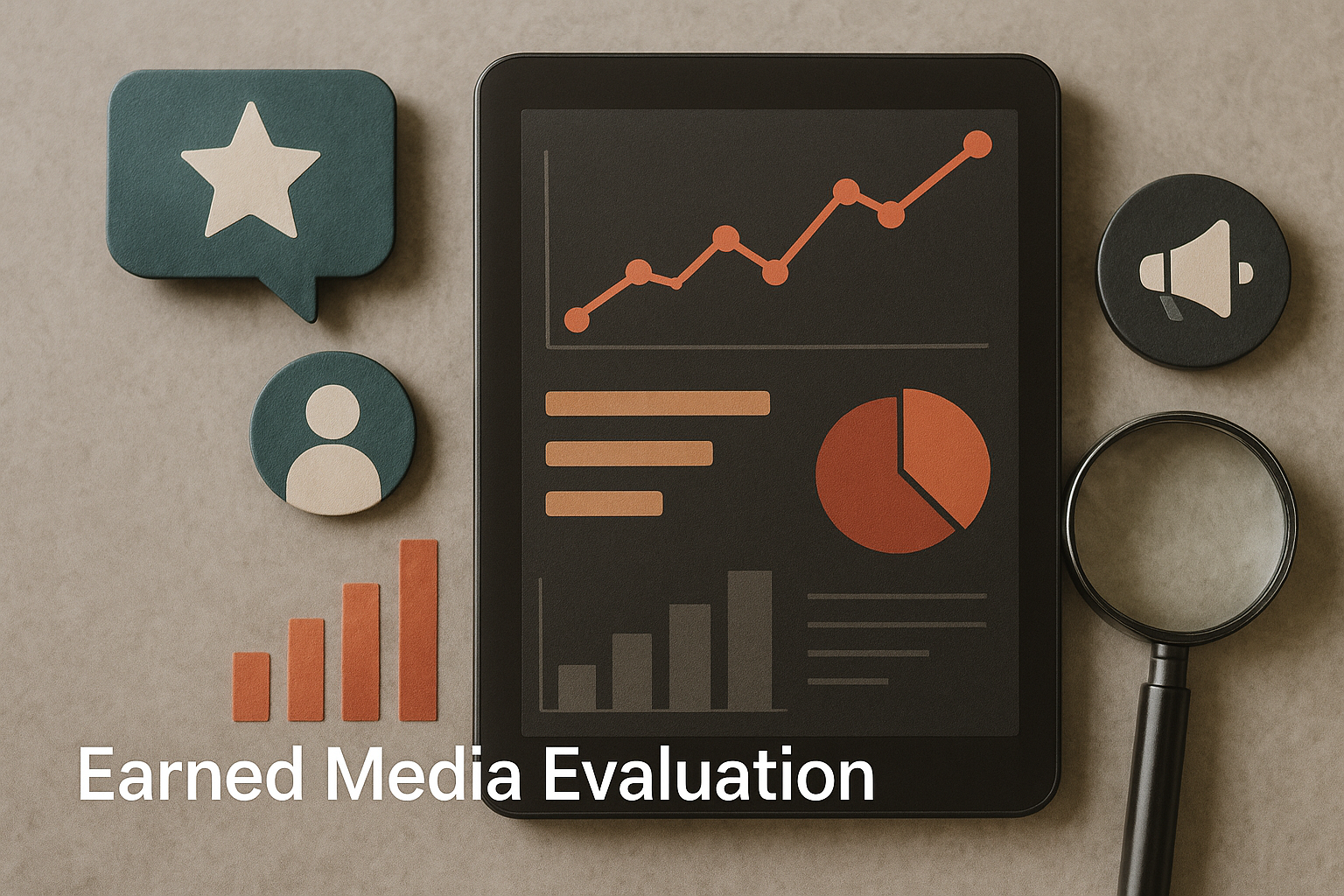Learn how to leverage influencer collaborations for successful brand partnerships. Build strong relationships, create engaging content, and measure ROI to drive growth.
The digital age has been instrumental in transforming how brands communicate with their audiences. People don’t want the same old marketing tactics; no one really likes them anymore. They sound too detached and impersonal. Traditional marketing is surely losing its grip; the place it used to hold within the market is surely lost to a larger extent.
This is where influencer collaborations come into play. It’s the era of connectivity and personalization. While not new anymore, with so many influencers rising from diverse demographics, you really should understand how it works. It can be very complex. Consider this: these partnerships are a potent force that can significantly drive your brand or business’s growth.
Here’s a straightforward explanation: these partnerships involve a brand teaming up with digital influencers who have significant followings online. You might wonder, are these individuals truly influential? The answer varies. There are micro-influencers and mega-influencers, each playing a distinct role. The digital landscape is vast, diverse, and constantly evolving. A PR agency like Impact Authority can help navigate this complex terrain to maximize your brand’s reach.
Now, to truly learn the why and how to build upon the power of influencer branding or influencer marketing/collaborations, we have this guide designed especially for you. Join us as we find out how such collaborations work and what really goes into them:
Influencer Economy: From Traditional to Contemporary
Remember the old TV commercials? They used to feature their favorite celebs shilling some product. Well, that’s kind of where it all started from. Back then, people only had access to a few mediums like TV, radio, and newspapers. So looking for a big audience was actually a difficult task. But things have changed, big time.
Now, everything is undergoing a complete transformation. Success now hinges on your social media skills and how well you adapt to the digital landscape. Platforms like Instagram, TikTok, and YouTube have evolved into dynamic playgrounds for influencers. These platforms are filled with creators from every niche and genre—but these aren’t just ordinary users. They’re digital icons, modern-day rock stars with devoted audiences hanging on their every word. And brands are eager to be part of the spotlight.
So, for instance, we’ve all seen famous brands displaying their ads during a match all around the stadium. That costs millions of dollars and obviously, not every person or business can afford that. So, how do you get the same kind of exposure? Easy! Team up with an influencer who has a loyal fan base instead of paying a million bucks for a Super Bowl ad. Let them spread the word. It’s a smarter way to reach people who actually care about what you’re selling.
Building Successful Influencer Collabs
In this section, we’ll talk about how to build a flawless collaboration. So, what are you waiting for? Dive in:
Finding Your Perfect Match: Picking the Right Influencer
Like all other things, not all influencers are created equal. You have to look for someone who vibes with your brand, like really connects with it. Think about it like this: Would Kim Kardashian ever sell fishing gear? The chances are pretty slim. So find someone whose audience really likes the stuff they promote or vice versa. That is your perfect match.
This is how you practically do it: Look at their followers. Are they the people you want to reach? Do their values align with your brand? Will they be interested in your products or services? These are the big questions. Also, check their engagement rate. Likes and comments are cool, but genuine interaction is what you should be looking out for.
Crafting a Killer Campaign: From Start to Finish
So you have the influencer figured out; it’s now time to plan your first major move. Get ready! Realize your goal, and you obviously know what it is by now. More sales? Better brand awareness? Figure these details out first. Then, brainstorm some ideas for content. Maybe it’s a sponsored post, or you’re planning on a giveaway or you quite possibly came across a limited edition product.
Remember, it’s all about storytelling. Create something that’s gonna make people go, “Wow, that’s cool!” Give your influencer some creative freedom, but make sure they’re on brand.
Here are some more examples of successful influencer marketing campaigns:
- Dove: Celebrating Real Beauty
Dove is a world-renowned skin and hair care company, offering products that are focused on one motto: Body positive. They involved influencers from diverse demographics who are all about creating a positive image for any type of body. They used the hashtag #LoveYourBody, creating multiple posts celebrating all body types. - HelloFresh: Mealtime Made Easy
Another example is from the food industry. HelloFresh is a German brand with an international presence in the USA and UK. They offer these meal boxes that come with detailed instructions along with all the ingredients. They are perfect for beginners as well as those busy bees who don’t have time to plan or shop for individual grocery items. They involved food bloggers in their marketing campaigns. Each came up with catchy taglines like “Best Meal Kit Ever,” to attract customers. - SoulCycle: Spinning Into the Digital Age
Here’s one from the fitness/health sector. SoulCycle is a fitness company under Equinox Group. It offers a different take on fitness, offering cycling and spinning workout classes. COVID hit, and like many other companies, SoulCycle also had to close its physical outlets. It collaborated with digital instructors who had a large social media following. In its marketing efforts, SoulCycle focused on live workout sessions and streamed on Instagram.
Content is King: Creating Influencer Magic
We cannot stress this enough, so here we go again: Your influencer’s content is the star of the show. However, ever wondered what makes it super? Well, for one, it has to be authentic. Then, it has to be engaging and, most importantly, on point. They shouldn’t be beating about the bush, and if you’re thinking that creativity is at stake then please don’t.
Content that is pointedly targeted at the audience always resonates better than ambiguous efforts. We’re not recommending any robotic structure to it and yes there should be ample room for creativity. But, you can’t possibly expect to gain much if an influencer is not direct about your message.
Secondly, give them guidelines for presenting your work, but mind you, don’t be too strict. You want their personality to shine through. Then, remember that visuals play a humongous role. You need good photos and videos cause they really can make or break a campaign. Also, encourage your influencer to use high-quality content that looks amazing on social media.
Did It Work? Measuring Your Success
You’ve dropped the cash on an influencer collaboration. Now, it’s time to see if it was worth it or not. Track everything: likes, shares, comments, and, of course, sales. There are a bunch of tools available out there. They can help you measure your ROI.
By any chance, that doesn’t mean you should only keep staring at numbers. Did your brand get more exposure? Did you reach a new audience? These are things to consider, too.
Remember, influencer marketing is a learning process. Keep experimenting and finding what works best for your brand.
Navigating the Challenges and Embracing the Future of Influencer Collaborations
The Pitfalls of Influencer Marketing: Common Challenges
The immense potential While no one can deny the significance of influencer marketing today, we need to remember that there are challenges, too. No, it can’t be stressed enough that you need to acknowledge the challenges first to actually understand that there can be problems.
Now, what can these look like, and where can they come from? Let’s take a peak:
- Well, to start with, one of the most faced/hurtful hurdles is influencer fraud and fake followers. And it has become quite common in recent times. There are many influencers who try to exaggerate their numbers to seem more appealing to brands. This can lead to wasted resources and diminished returns on investment (ROI).
- Another challenge is measuring return on investment (ROI) properly. It can be a complex task to analyze the exact impact of an influencer campaign on sales. This is because multiple factors can influence consumer behavior.
- So, let me clarify this further. Figuring out whether your influencer collaboration actually did anything is more like trying to find a needle in a haystack. The problem is this: You spend all this cash, and you’re hoping for big results. But how do you know if it was the influencer who brought in the dough or if it was that killer ad campaign you ran? It’s a real head-scratcher.
- It is absolutely crucial to maintain authenticity and transparency if you’re looking for anything that resembles long-term success. Due to the constant onslaught of exposure, consumers are becoming increasingly savvy. They can detect inauthentic endorsements. Here’s how it goes:
- You must have seen it, too. A lot of time, you see these influencers promoting a brand or a product, but something sounds completely off. The influencer sounds too fake, and sometimes, the product has genuine bad reviews, but the influencer appears to be solely motivated. That is usually because they are only interested in it for financial gain. Steer clear because this can damage both the influencer’s and the brand’s reputation.
Authenticity and Transparency: The Cornerstones of Trust
Authenticity and transparency should reign supreme, and that is the number one concern in the world of influencer marketing. Thinking that customers are fools who can be taken advantage of may work in the short term but not in the long term. Consider this: You’re looking for skin products, and you come across an influencer promoting a known brand. You are more likely to trust recommendations from influencers who appear genuine and relatable.
However, to your surprise, you find the same influencer promoting the same kind of product but a completely different brand as well. This is why you need to invest time and energy in finding the most suitable influencer who does exactly as they say.
So, just prioritize these values, and you may just have the right recipe for successful influencer collaborations. This way, brands can build stronger relationships with their target audience. Here are some clear terms for a productive collab:
- Clear Disclosures: Brands and influencers must adhere to disclosure guidelines to maintain consumer trust. Clearly indicate the sponsored content; it is essential to avoid misleading consumers.
- Value-Aligned Partnerships: Secondly, make sure you collaborate with influencers whose values align with the brand’s mission. This can foster authentic connections.
- Transparency in Influencer Selection: Sharing the criteria for selecting influencers can enhance credibility and demonstrate a commitment to ethical practices.
The Future of Influencer Collaborations: Emerging Trends
The field of influencer marketing is always changing, with new trends appearing on a regular basis.
- An important trend to note is the growth of micro-influencers. Even while these people may have smaller fan bases, they frequently have more engaged audiences.
- User-generated content (UGC) is another trend gaining momentum. By encouraging customers to share their experiences with a brand, businesses can leverage the power of word-of-mouth marketing and build a strong sense of community.
- Artificial intelligence (AI) integration is changing the sector. AI-powered solutions can be used to find possible influencers, evaluate the success of campaigns, and even come up with ideas for new content.
It’s critical for brands to be ahead of the curve and adjust to the shifting parameters of influencer marketing as technology develops. Through adopting new strategies and conquering obstacles, companies can optimize the advantages of these alliances.
Case Studies of Successful Influencer Marketing Campaigns
Case Study: Daniel Wellington – Micro-Influencers and Affordable Luxury
Campaign Objective: Expand brand reach and attract a younger, trend-conscious crowd.
Strategy: Daniel Wellington, a Swedish watch brand, hit the nail on the head by using micro-influencers to inject authenticity and relatability into their marketing. Partnering with influencers who vibed with their brand’s style, they nailed it by positioning their watches as affordable luxury.
Influencer Selection: DW targeted micro-influencers in the fashion and lifestyle scenes who had a real passion for watches and accessories.
Campaign Execution: The brand sent out complimentary watches to influencers, letting them style and feature the watches in their content. They encouraged genuine storytelling, allowing influencers to share their personal experiences with the product.
Results: The campaign soared, significantly boosting brand awareness and sales. Thanks to the genuine trust of micro-influencers, DW successfully reached a younger audience and made their watches a must-have accessory.
Case Study: Gymshark – Community Building and User-Generated Content
Campaign Objective: Build a strong brand community and ramp up engagement among fitness fans.
Strategy: Gymshark, a fitness apparel brand, created a loyal following by focusing on community and user-generated content. They turned their customers into brand ambassadors through various initiatives.
Influencer Selection: Gymshark teamed up with fitness influencers of all sizes, from micro-influencers to big-name fitness celebrities. This broad approach helped them reach a diverse audience.
Campaign Execution: The brand inspired influencers to produce genuine and motivational content showcasing their workouts and Gymshark gear. They also ran challenges and contests to encourage user-generated content and foster a tight-knit community.
Results: By honing in on community building and user-generated content, Gymshark carved out a solid brand identity and loyal customer base. Their influencer marketing strategy played a key role in driving sales and boosting brand awareness.
Case Study: Glossier – Authenticity and Inclusivity
Campaign Objective: Craft a strong brand identity rooted in authenticity and inclusivity.
Strategy: Glossier, a beauty brand, nailed influencer marketing by focusing on authenticity and inclusivity. They collaborated with influencers who matched their brand values and could genuinely represent their products.
Influencer Selection: Glossier partnered with a varied group of influencers, from beauty bloggers and makeup artists to everyday users. This approach helped them reach a broad audience and foster a sense of inclusivity.
Campaign Execution: The brand encouraged influencers to share their honest reviews of Glossier products and create relatable content that resonated with their followers. Glossier also spotlighted user-generated content and customer testimonials to build trust.
Results: By prioritizing authenticity and inclusivity, Glossier built a strong, loyal following. Their influencer marketing efforts have significantly contributed to their success and cemented their spot as a leader in the beauty world.
Conclusion
In today’s digital landscape, influencer marketing is more than just a trend; it’s a powerful tool that, when executed correctly, can drive brand success to new heights. There are multiple brands that are utilizing the skills of influencers who are focused on authenticity, community, and genuine connections with their audiences.
By selecting the right influencers and encouraging authentic storytelling, brands and businesses have not only increased their visibility but have also built loyal customer bases that resonate with their values. The success stories of these campaigns highlight the importance of staying true to your brand’s identity while engaging with your audience in a meaningful way.
So, to sum it up, whether you’re a startup or an established brand, the lessons from the above case studies show that a well-thought-out influencer marketing strategy can make all the difference in creating lasting brand impact and driving real business growth.




